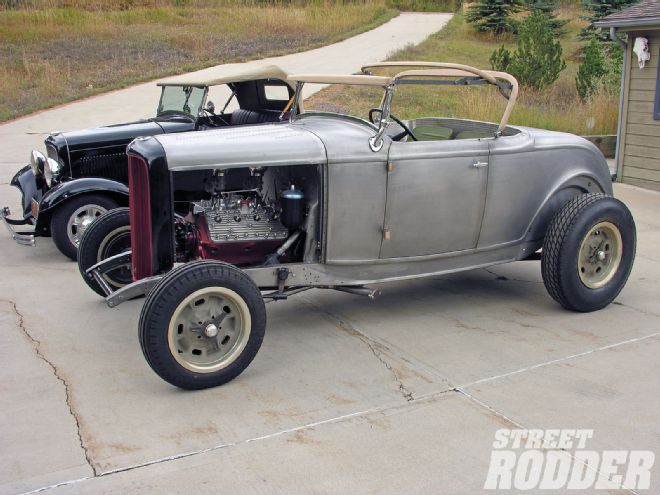
Every roadster needs a top at least sometimes. Don't believe me? Take a roadster ride under the oppressive sun or through a chilly rainstorm. Or better yet, experience both ends of the spectrum within the same day and finish it off with the threat of a tornado. I have, and if wanting a top in those cases labels me a coward, then I wear the title with pride. A top is great.
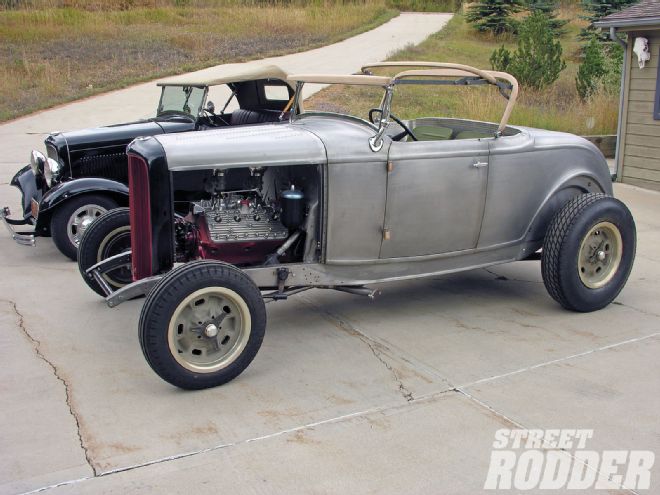
The commercially available top options, however, aren't so great. That's not to knock the tops themselves; they look good and seem well built. The issue is the top-to-car ratio: There just aren't that many top options compared to the number of cars that can wear them. A top is essential to a car's personality, too, so to finish a unique car with a one-size-fits-all top is like mail ordering a wedding cake.
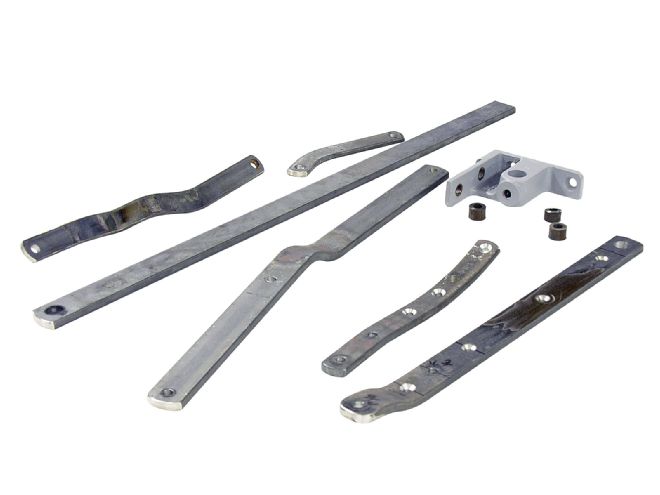 When we say Frank Wallic built his top, we mean it; he literally cut and bent some strap steel into the shape of a set of stock irons. For the sane among us, consider Superior Car Parts' reproduction irons and bows.
When we say Frank Wallic built his top, we mean it; he literally cut and bent some strap steel into the shape of a set of stock irons. For the sane among us, consider Superior Car Parts' reproduction irons and bows.
Another solution is to build your own top, but that isn't so great either. A stock-type top can be manipulated into infinite shapes to suit any car but its simple operation belies a complex linkage. One misplaced cut or wayward hole can throw off a top's geometry and make it a binding mess that neither folds as a stock top does nor stows conveniently in the trunk as the aftermarket ones do. And let's face it: when necessary a top may be great, but it's even better if it disappears when it isn't.
We've always known Frank Wallic is a craftsman, but his latest project confirms what we've always suspected: he's an engineer too-an eyeball engineer at least. Recently, he modified a set of stock-dimension top irons to fit his car. Among his criteria were that the top had to reflect the car's era and fold as it did by the factory.
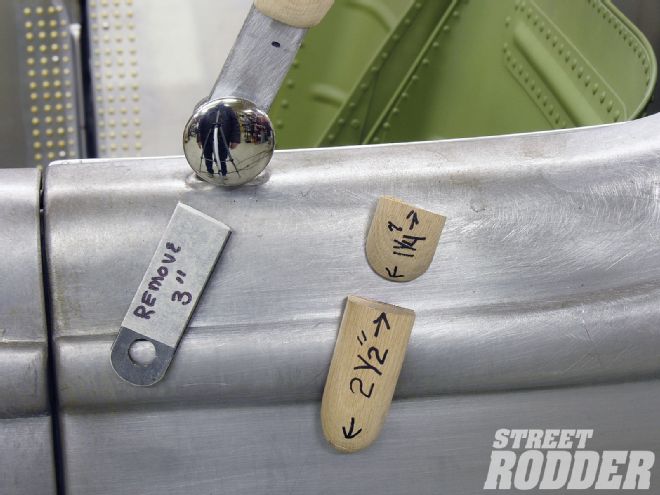 Wallic's irons may resemble stock ones but they're not. He made his main bow base irons 3 inches shorter. He cut the Superior Car Parts wood bow 2-1/2 inches. Later we'll explain why he shortened the wood another 1-1/4 inches.
Wallic's irons may resemble stock ones but they're not. He made his main bow base irons 3 inches shorter. He cut the Superior Car Parts wood bow 2-1/2 inches. Later we'll explain why he shortened the wood another 1-1/4 inches.
What follows is Wallic's elegantly simple way to chop a folding top without impairing its functionality. Typically, we address the individual modifications in the photo captions but in this case we elected to outline them first and use the captions for more specific information. Though the tasks are really quite simple, the reasons behind them require greater explanation.
Top Dynamics
Among the things that distinguish a soft top from a closed-car top is how they behave when chopped. Most closed cars' A- and B-pillars lean toward each other, so clipping them to lower the top they support increases the distance the top must span. Two popular methods prevail: angle the posts further toward each other or stretch the top itself. The latter is definitely the simpler route but neither is very easy.
Folding tops, on the other hand, often suffer the exact opposite problem. The windshield frame and main bow lean the same way: back. Since the rest of the top hinges upon that main bow, clipping its base irons to lower the top actually pushes the whole top forward. Technically it's a problem as the top bow usually leans back at a degree greater than the windshield posts. In those cases, the top, when chopped, moves beyond the windshield. We say it's technically a problem because it's actually a blessing in disguise.
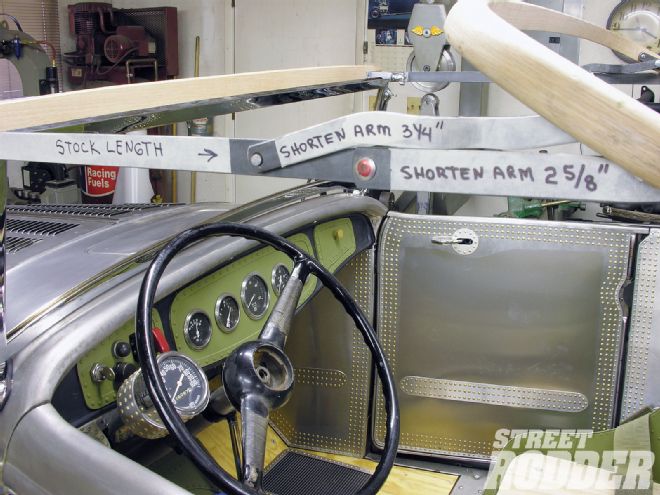 Cutting the main irons moved the top forward and made the leading side irons hang beyond the corner blocks. Wallic corrected the overhang by trimming the trailing side irons to the proper length.
Cutting the main irons moved the top forward and made the leading side irons hang beyond the corner blocks. Wallic corrected the overhang by trimming the trailing side irons to the proper length.
Most people complain that the stock top's backlight (the panel with the rear window) sits too upright when the top is up. While it's purely subjective (some feel vertical elements often look awkward on swoopy things), the other complaint about stock-type tops is objective: when folded down, most top pivots overhang the door opening to make entry and egress even tougher.
Dropping the Top
Wallic clipped 3 inches from the bottom of the main bow's base irons. Due to the main bow's rearward angle, the top came down 2 inches to match the windshield and forward just shy of the same amount. Moving the top forward and down naturally raked the backlight to a more aggressive (and favorable) forward angle. He later trimmed the wooden part of the bow to increase that angle and lower the lid some more, but we'll address that in the captions.
As noted before, moving the top forward makes the header bow overshoot the windshield. Complicating matters was the windshield itself; Wallic angled it rearward to make the car look swoopier, thereby exaggerating the amount the top overhung it.
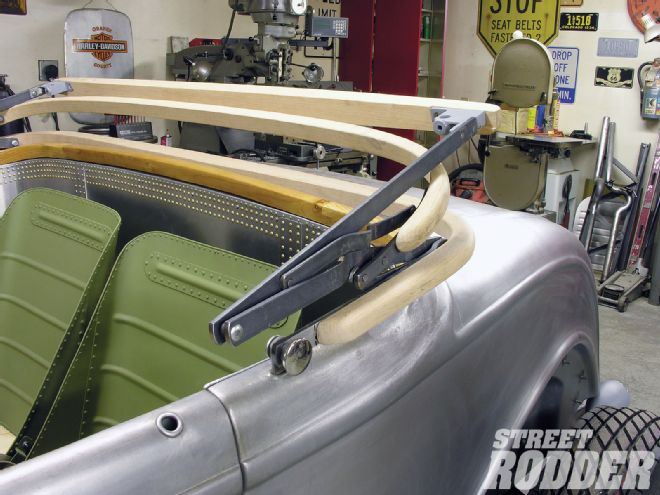 As a result of Wallic's calculations, the main bow just barely clears the tack strip and the header bow overhangs the halo bow just enough to not pinch the topping. Note how that side-iron pivot stops just short of the jamb.
As a result of Wallic's calculations, the main bow just barely clears the tack strip and the header bow overhangs the halo bow just enough to not pinch the topping. Note how that side-iron pivot stops just short of the jamb.
Shortening the Side Irons
To realign the header bow and windshield, Wallic needed to shorten the side irons. The question was which ones? Each side has two elements: a straight leading iron and a doglegged trailing iron, known henceforth as leading and trailing irons. The forward ends of the leading irons indirectly bolt to the header bow and the rearward ends of the trailing irons pivot on the main bow. Naturally, the irons' open ends meet near the middle of each window opening.
Simplicity suggests shortening the leading irons but Wallic remembered how the pivots overhang the door with the top down. Some eyeballing indicated that the trailing irons dictate the pivots' location, so on a gamble he shortened their front ends until the header bow aligned with the windshield. The bet paid off; just as his eyeball suggested, shortening the trailing side irons made the pivots land just behind the jambs, which makes one wonder why Ford didn't shorten those links and extend the straight ones in the first place.
 The final cut map offers a concise perspective. Wallic left the leading (straight) side irons alone but trimmed the trailing (doglegged) side irons 2-5/8 inches. Trimming the halo-bow legs 5/8-inch shorter than the trailing side irons (3-1/4 inches total) brought down the halo bow and top crown.
The final cut map offers a concise perspective. Wallic left the leading (straight) side irons alone but trimmed the trailing (doglegged) side irons 2-5/8 inches. Trimming the halo-bow legs 5/8-inch shorter than the trailing side irons (3-1/4 inches total) brought down the halo bow and top crown.
Flattening the Crown
Clipping the trailing side irons made the top fit the windshield and its pivots land in a better place but it screwed up the geometry for a secondary bow just ahead of the main one. This bow-we'll call it the halo-determines the roof's crown profile. It pivots directly on the trailing side irons but another set of shorter legs link it to holes in the leading side irons. Shortening the trailing side irons moved the halo closer to the leading side irons, but the stock-length links between the leading irons that the halo made the top point up as if it were a tent.
Wallic could've just shortened the legs that linked the halo to the leading irons by the amount he shortened the trailing irons, but that presented its own problem: even back in its stock location, the crown looked too high for the lowered top. So Wallic tested crown heights by clamping the halo's links to the side irons at various locations. In the end he left the halo bow and irons intact but shortened the legs that link the halo to the leading side irons by 5/8-inch more than he shortened the trailing irons (the photo really will make sense of it). As a result, the halo bow laid down just a little bit lower, thereby reducing the crown at the middle of the top to match the top's profile.
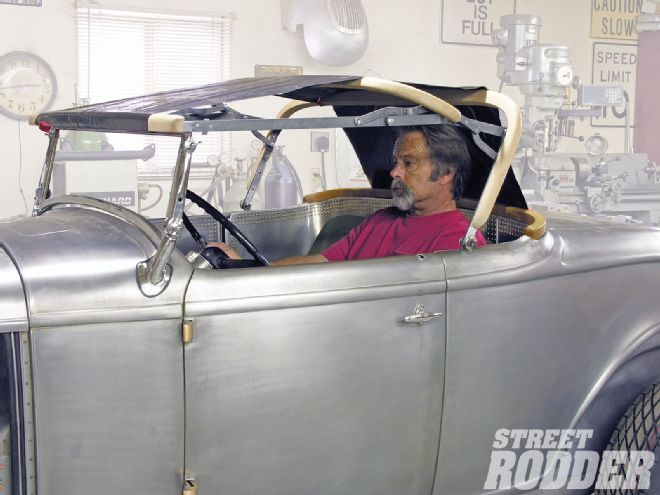 Wallic then draped and taped a garbage sack over the bows and tested the profile. Though good, he deemed it not good enough as the main bow sat just a touch too high for his taste.
Wallic then draped and taped a garbage sack over the bows and tested the profile. Though good, he deemed it not good enough as the main bow sat just a touch too high for his taste.
Conclusion
The three preceding steps outline the biggest modifications that Wallic made to his top but they're far from the only changes he made. In fact, during a trash bag mockup, Wallic concluded that the top would look better if he took a hair of height out of the wood in the main bow. Nor were the changes he made set in stone. Windshield chop and angle, top angle and style, and occupant height ultimately determine a top's shape. These things underscore the importance of making each top fit the car, its style, and its occupants.
We admit it's a fair bit of work even with stock-type irons. But making your own top to suit your needs is work that pays off. Just as you won't pass up a roadster ride even if the weather looks sour, you'll never pass another car with a top exactly like the one you built yourself.